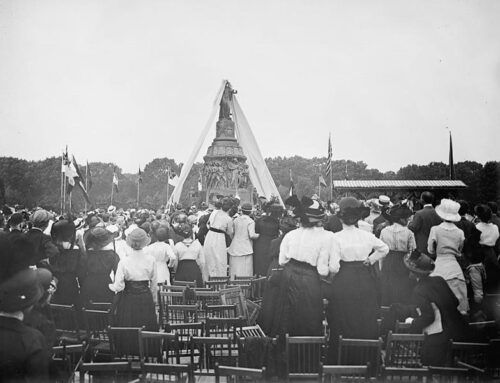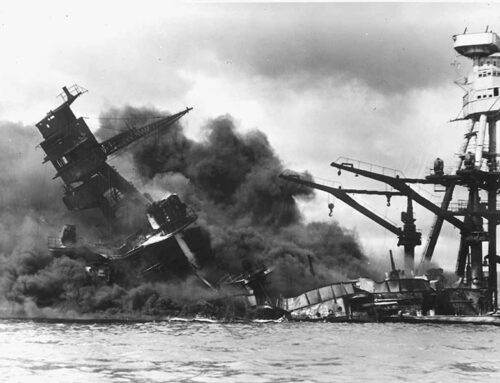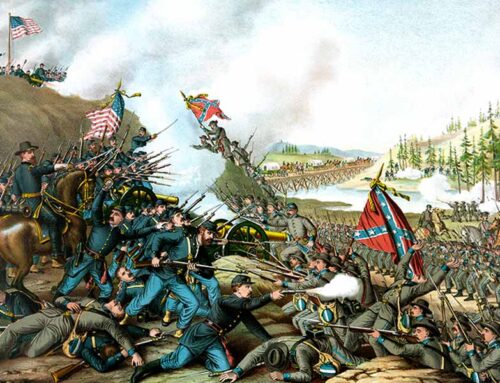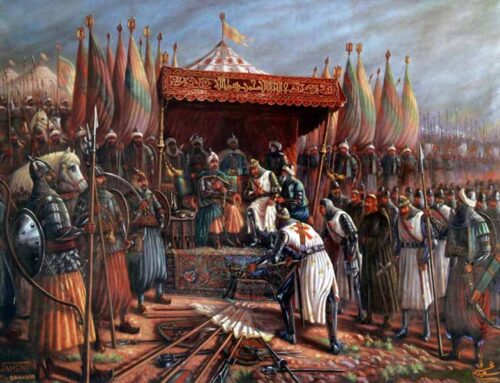“And I will let your numbers be increased, all the children of Israel, even all of them: and the towns will be peopled and the waste places will have buildings.” —Ezekiel 36:10
The Death of Henry Flagler, May 20, 1913
![]() ne hundred ten years ago Henry Flagler died. Outside of Florida, few Americans recognize his name. In his own day he was often mentioned in the same breath with John D. Rockefeller, Andrew Carnegie, Henry Ford, Cornelius Vanderbilt and J.P. Morgan, “industrial statesmen” and philanthropic billionaires all. St. Augustine, Florida boasts of the beautiful architecture and legacy of Flagler College. There are Flagler streets, a Flagler Island, Henry Morrison-Flagler Museum, Flagler Beach, and the Kenan-Flagler Business School at the University of North Carolina. Although not perfect, Henry Flagler was a man of excellent character, entrepreneurial business genius, and indefatigable energy.
ne hundred ten years ago Henry Flagler died. Outside of Florida, few Americans recognize his name. In his own day he was often mentioned in the same breath with John D. Rockefeller, Andrew Carnegie, Henry Ford, Cornelius Vanderbilt and J.P. Morgan, “industrial statesmen” and philanthropic billionaires all. St. Augustine, Florida boasts of the beautiful architecture and legacy of Flagler College. There are Flagler streets, a Flagler Island, Henry Morrison-Flagler Museum, Flagler Beach, and the Kenan-Flagler Business School at the University of North Carolina. Although not perfect, Henry Flagler was a man of excellent character, entrepreneurial business genius, and indefatigable energy.
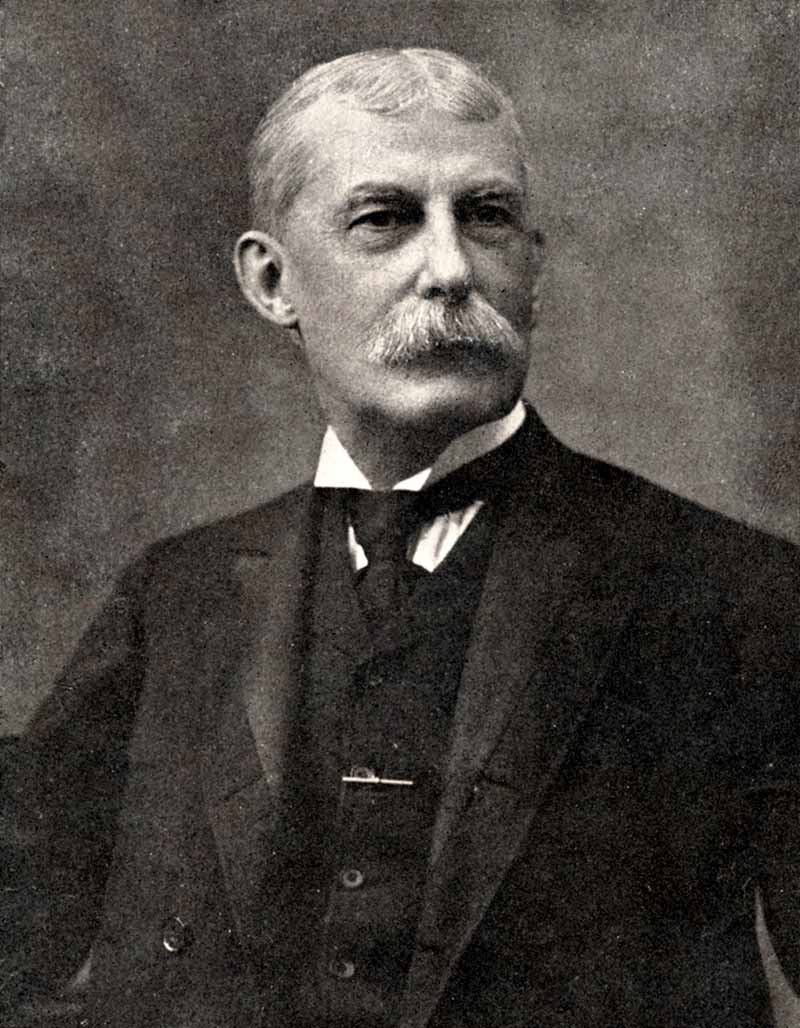
Henry Morrison Flagler (1830-1913)
Flagler’s immigrant ancestor, Zacharra Flegler, fled the Palatinate in Germany to the Reformed Church haven of the Netherlands in the auspicious year of 1688, the date of the “Glorious Revolution” in England, which brought the Dutch Prince William of Orange to the throne. Zacharra Flegler moved to England and then America in 1710. Henry was born to Presbyterian pastor Isaac Flagler in 1830. At the age of 14, Henry’s brother persuaded him to move to Ohio to join his paternal Uncle Lamon Harkness as a worker in his store.
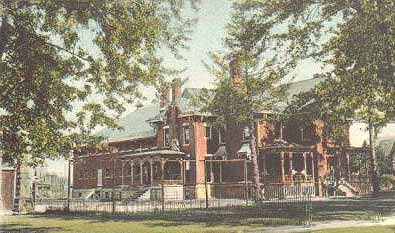
Henry Flagler’s home in Bellevue, OH
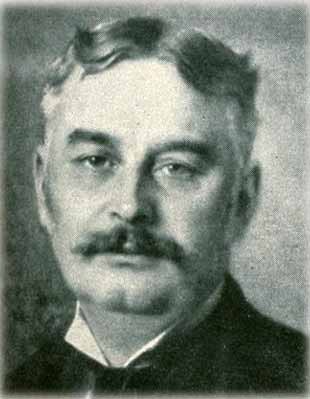
Lamon Vanderburgh Harkness (1850-1915)
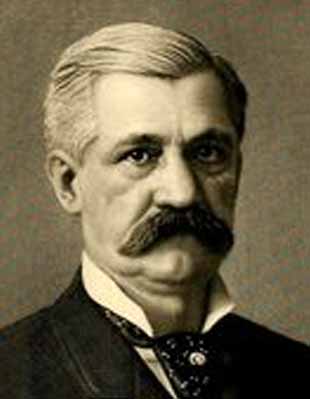
Daniel M. Harkness (1822-1896)
A hard worker, Henry eventually bought a stake in the company, and jumped at an opportunity to join his uncle in the grain transportation business, where he providentially met a Cleveland entrepreneur named John D. Rockefeller, who worked as a commission agent in the grain business. After a brief foray into the salt mines of Michigan to acquire government contracts to supply salt during the War Between the States—a venture that collapsed when the war ended—Henry Flagler returned to Ohio and grain transport. When Rockefeller approached Flagler’s step-brother for investment capital to form a start-up in the recently established oil business, Mr. Harkness, as part of the financial loan, insisted that Henry Flagler join as a partner. And thus, Henry Flagler became a partner in what became Standard Oil of Ohio, a business that became a multi-billion dollar corporation under the expert control and gaze of the Rockefeller/Flagler partnership. As the most profitable oil refinery business in Ohio, and eventually the world, Flagler, “the brains of the company,” built an incredible fortune, much of which would be invested in building railroads, beautiful buildings, and towns in Florida.
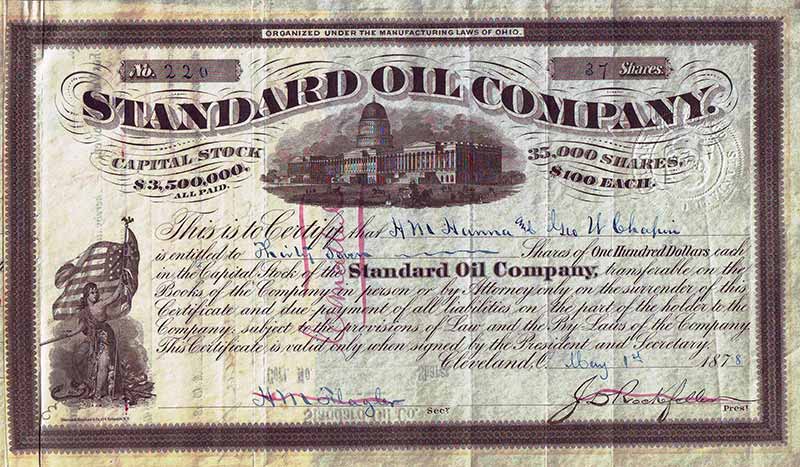
Share of the Standard Oil Company, issued May 1, 1878 and signed by Henry Flagler and John D. Rockefeller
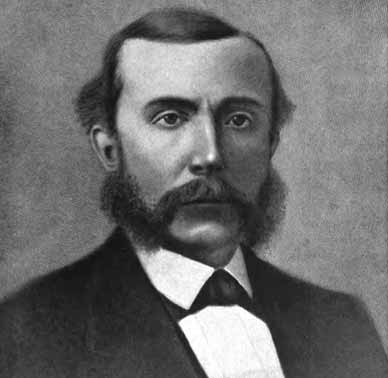
John Davison Rockefeller (1839-1937)
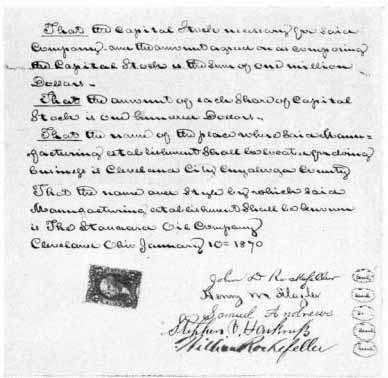
Standard Oil Articles of Incorporation signed by John D. Rockefeller, Henry M. Flagler, Samuel Andrews, Stephen V. Harkness, and William Rockefeller, 1870
The illness of his wife, which eventually proved fatal, brought Henry Flagler to visit Jacksonville, Florida for the salubrious climate. Upon his remarriage in 1883, Flagler again visited Florida, moving down the coast to the city that charmed him and set his aesthetic and business juices flowing: St. Augustine. Recognizing the city’s potential for a grand hotel, development and tourism, Flagler designed and built the most technologically advanced and most beautiful hotel in the nation. Along with the Ponce de Leon Hotel, he built at least three churches, Presbyterian, Methodist, and Roman Catholic, as well as a rail line from Jacksonville to St. Augustine, to bring visitors to the city. Augustine to bring visitors to the city. Those projects were only the beginning of the fulfillment of the vision he had for Florida. He purchased and combined short line railroads and built a line that ran all the way to the Florida Keys.

Mary Harkness Flagler (1833-1881), first wife of Henry Flagler
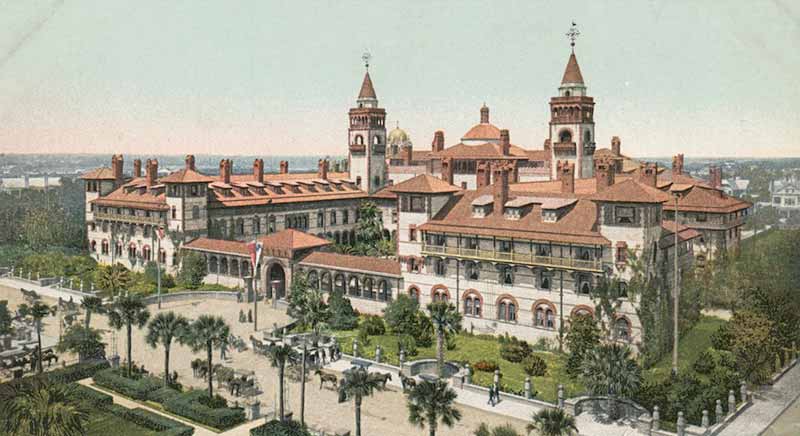
Ponce de Leon Hotel postcard, now Flagler College, St. Augustine, FL
Flagler built the Alcazar Hotel to handle the “overflow” from the Ponce, and for tourists who wanted a beautiful place to stay but could not quite afford the Ponce de Leon. He also purchased the Casa Monica Hotel from his friend Franklin W. Smith, one of the original eccentrics of Florida history. He developed Daytona Beach, Palm Beach, and other coastal towns.
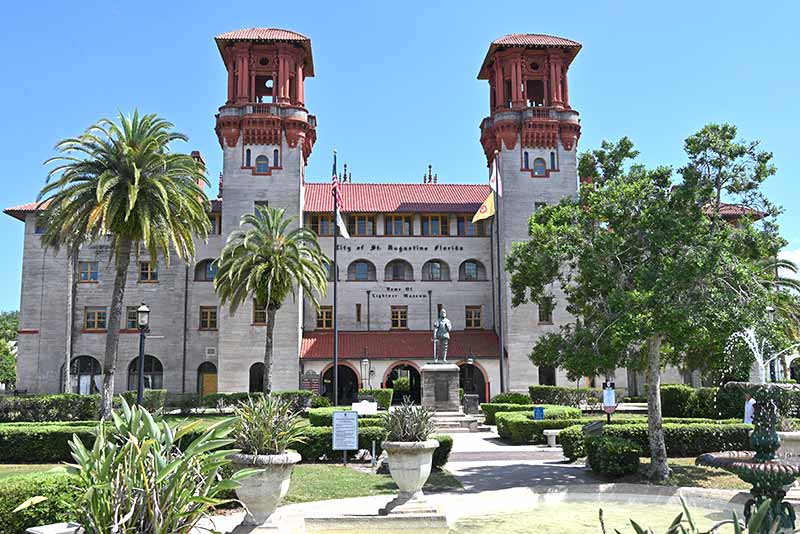
Alcazar Hotel, St. Augustine, FL (now the Lightner Museum)
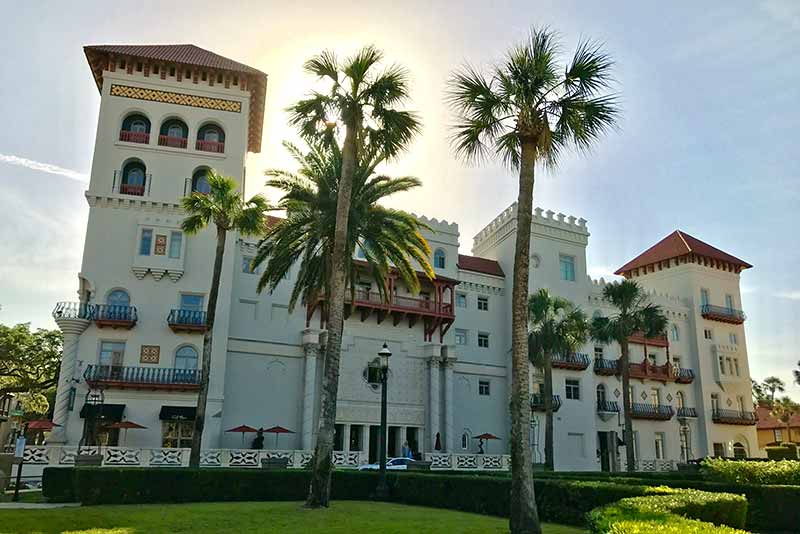
Hotel Casa Monica, St. Augustine, FL
When Henry Flagler built a town, he brought in farmers to plant and raise crops, built churches for the worship of God, and civic buildings for local government. Flagler brought multiple thousands of workers from northern cities to do the construction, and the best engineers and building designers available in America. He eventually eased himself out of leadership work in Standard Oil to devout himself to his Florida projects. His partner John D. Rockefeller failed to understand the delight and joy that Henry Flagler found in his Florida projects and helping other people prosper. When he founded a major city in South Florida, the state wanted to name it Flagler, but the modest millionaire refused to have his name attached to the city and insisted it take the name of a nearby river, Miami.
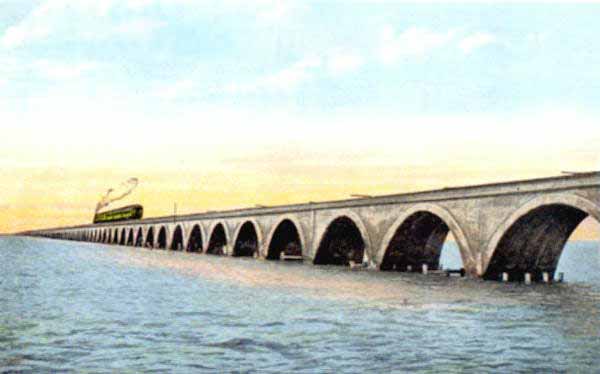
Florida East Coast Railway, Key West Extension, express train at sea, crossing Long Key Viaduct, Florida
After falling down a flight of marble stairs at the age of 83, Flagler died on May 20, 1913. The overseas railway he built across the Florida Keys, an engineering marvel never before attempted, which lasted until destroyed by the hurricane of 1935. Nonetheless, the pillars he planted in the ocean now hold up the Overseas Highway across the Keys. He is buried next to his beloved daughter in the crypt of the Presbyterian Church he built in St. Augustine. The Ponce de Leon is now Flagler College, the main building of which is still one of the most beautiful ever built in America. Every year on our Florida tour in February, we spend an entire day studying the life and creative architectural wonders that God in His providential plan enabled Henry Flagler to create. Florida would not be Florida without him.
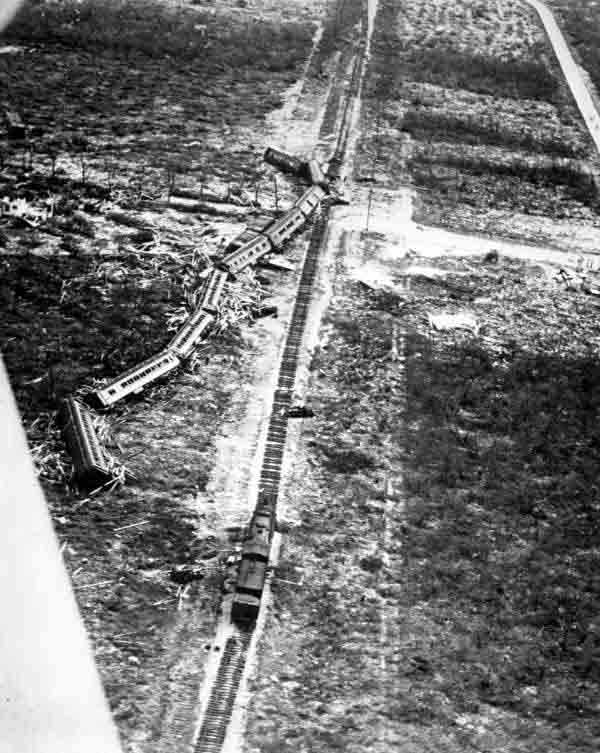
Florida East Coast Railway Overseas Railroad relief train derailed near Islamorada during the “Labor Day” Hurricane of 1935
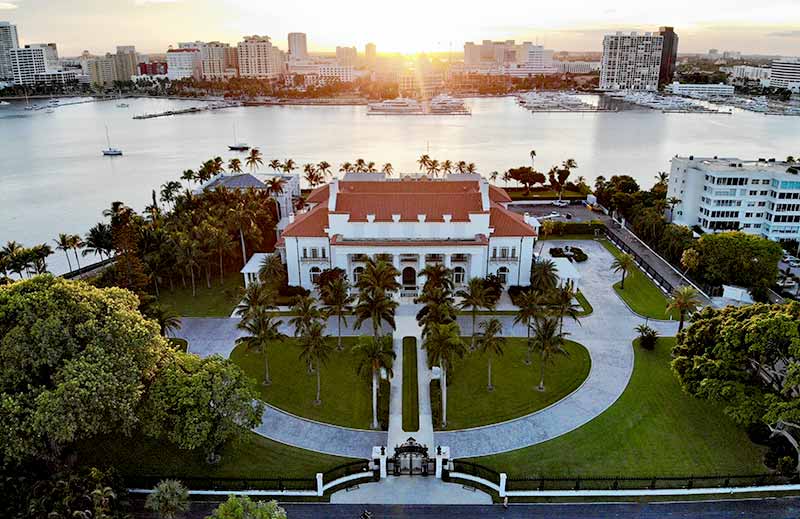
Whitehall—the 75-room, 100,000-square-foot Gilded Age mansion and personal home of Henry Flagler in Palm Beach, Florida—now serves as the Flagler Museum
FIRST 20 TO REGISTER, SAVE 10%!
Join us in sunny Florida as we visit the magnificent Castillo de San Marcos, as well Henry Flagler’s luxurious Hotel Ponce de Leon (now Flagler College), one of the finest examples of Spanish Renaissance architecture. Learn More & Register >
Image Credits: 1 Henry Flagler (wikipedia.org) 2 Flagler Home (wikipedia.org) 3 Lamon Harkness (wikipedia.org) 4 Daniel Harkness (wikipedia.org) 5 John D. Rockefeller (wikipedia.org) 6 Standard Oil Articles of Incorporation (wikipedia.org) 7 Standard Oil Share (wikipedia.org) 8 Mary Harkness Flagler (findagrave.com) 9 Ponce de Leon Hotel (wikipedia.org) 10 Alcazar Hotel (wikipedia.org) 11 Hotel Casa Monica (wikipedia.org) 12 Overseas Viaduct (wikipedia.org) 13 Derailed Train (wikipedia.org) 14 Whitehall (wikipedia.org)




